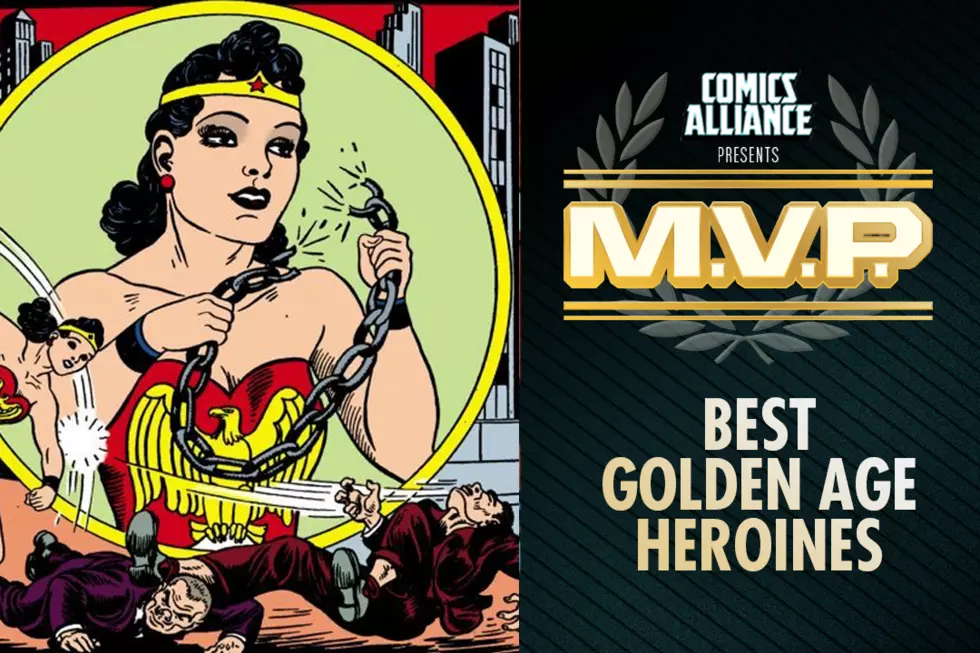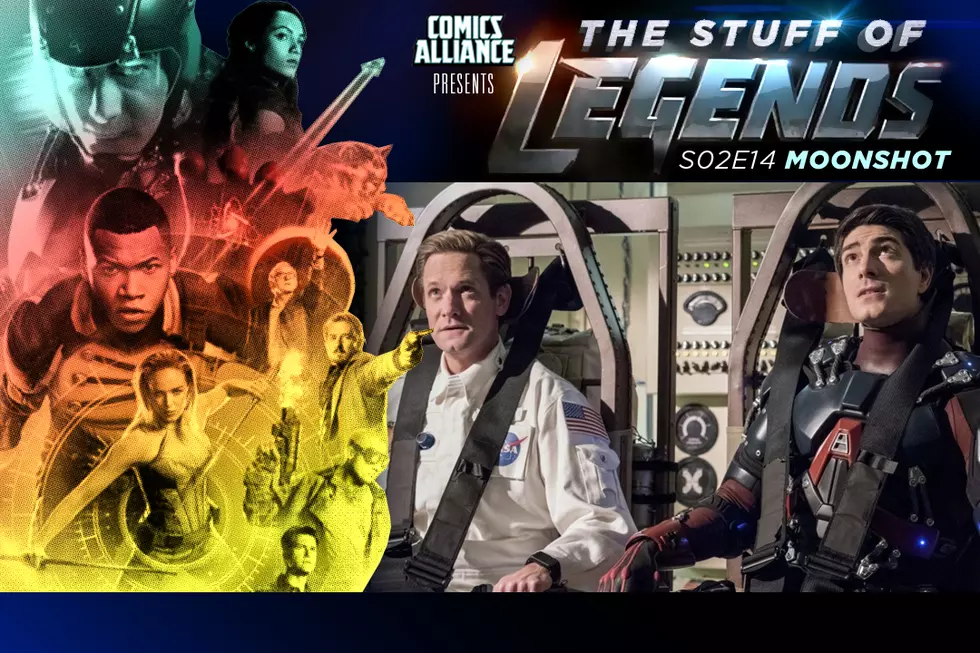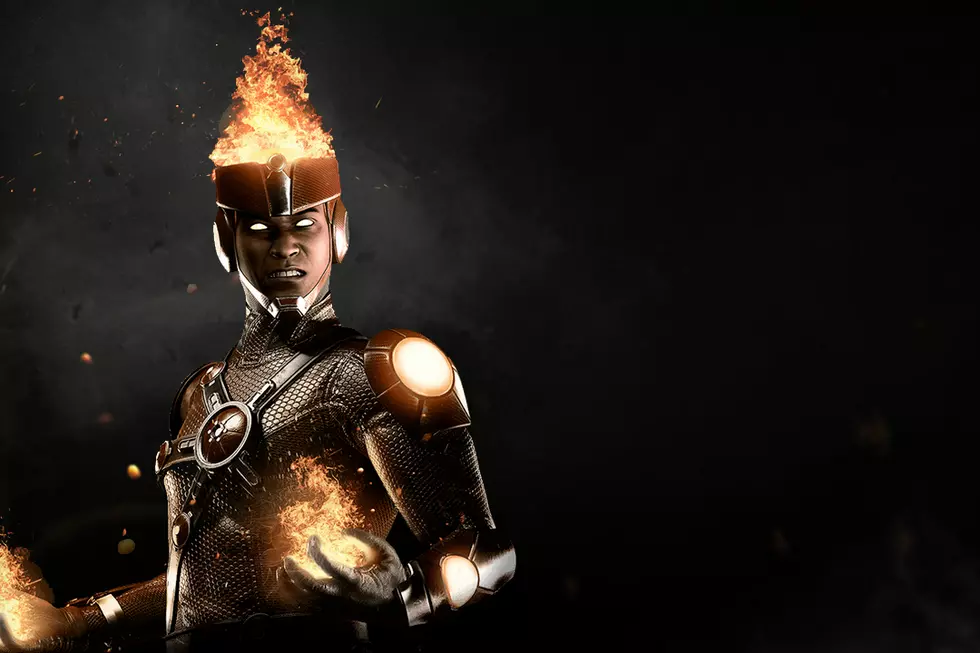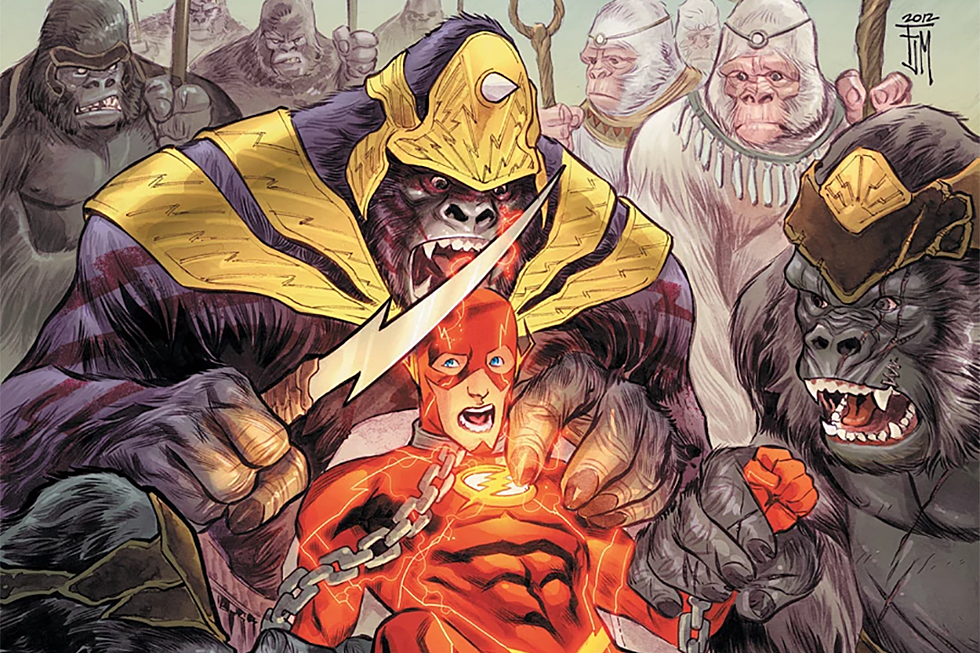![Brightest Day 17: Longest Day [Review]](http://townsquare.media/site/622/files/2011/01/bd17aiiieeee.jpg?w=980&q=75)
Brightest Day 17: Longest Day [Review]

It's been eight months since the first issue of Brightest Day. Now, if an actual day were to last that long, it would cause massive droughts, famine and heat waves on one side of the Earth while the other freezes and probably undergoes equal amounts of famine. In this case it's just a comic book, and the only excessive heat generated has come from either Firestorm or from the flame wars the book has set off in forums. Many of which have, come to think of it, revolved around Firestorm, making them some kind of Flamefirestorm, which was either the title of a book from the nineties or should have been. Someone with access to a time machine and Rob Liefeld get on that.Now, Firestorm doesn't feature much in this issue aside from being on the cover and having a short scene that resolves the cliffhanger from the last issue where it was implied that he might have inadvertently destroyed the universe (SPOILER: He did not). Instead, the issue revolves Hawkman, Hawkgirl and the Star Sapphires.
The Sapphires continue to be one of the least well-defined of the emotional corps, primarily due to the fact that each new Corps' powers and responsibilities seem to shift and change based the plot and the characters that creators want to feature in a given story. Meanwhile, the backup features an extremely sentimental story about the former Deadman which is a strange juxtaposition to the accompanying story that does not mesh well.
While I have several problems with Brightest Day, the series, that I'll be getting to shortly, I'll start by addressing my major problem with this specific issue: the Star Sapphires. They haven't had the most dignified existence so far, and they've had about as much positive impact on the role of female characters in comics as you'd expect from an organization whose two defining fashion traits are the color pink and cleavage. Their most notable achievement to date has been to provide Wonder Woman with a costume change that, while it didn't trigger the sort of virulent internet hatred that pants and a jacket managed to, were still a far, far less dignified portrayal of the character.
But it's the underlying structural problems of just who the Star Sapphires are that the real issue. Throughout the leadup to Blackest Night and into Brightest Day, Geoff Johns has set up the seven (plus two) Corps and tied them to a characteristic emotion: willpower for green, fear for yellow, rage for red, greed for orange, hope for blue, love for violet and compassion for indigo (and black for death, and white for life). But the lines that separate those emotions, particularly the ones in there that actually are emotions, are often blurry, and not much work has been put into clearly explaining the differences.

What seems like it could be called compassion or greed has often been explained away as love so that Carol Ferris can step in to take a role in the story. The only thing we seem to clearly know about the Star Sapphires is that the true power of love is something to be wielded only by women, which is frankly a highly troubling concept that supports the harmful social norm that men (and boys) should not display emotions that are seen to be soft and non-aggressive. Except for compassion. Which means something different from love in, again, a way that's either not explained or poorly explained.
Brightest Day #17 does not help this lack of explanation problem, and if anything it makes it worse. Hawkman and Hawkgirl have been transported to the planet Zamaron, headquarters of the Sapphires, as part of an attempt by Hawkgirl's mother to get access to an ancient power source on the planet. Star Sapphire leader Carol Ferris rides to their rescue on the back of Predator, the entity of love. A giant, flying pink monster with a long ribbed body and a smooth, rounded tip of a head. Because what else would the leader of an all-female corps of bikini-wearing love powered warriors ride into battle on?
It's fairly par for the course in the Blackest Night/Brightest Day saga that nothing is subtle, not even things that should be, and that's how we end up with a later image where Carol is holding a pink longsword made of pure love energy and it is somehow only the second most phallic object on the page.

Predator, who's made previous appearances in Green Lantern books, is actually motivated by the absence of love, and not by love itself. Which, again, seems pretty out of character and inconsistent with how the entities work for the other corps. Parallax is practically fear incarnate and Ion's pure Willpower, but apparently the entity of Love is all about having no love whatsoever.
And if the implication is that Predator's power comes from a desire to have love, that comes across as more of a twisted, specific form of greed. In any case, it's helpful here because Hawkgirl's evil mother is after the power of the Violet Lantern battery. Which doesn't sound like what she wants is love; it sounds like what she wants is power. But that's kind of the same thing because it lets Predator track her emotion. Even though when he finds her he kinda says all she wants is power, not love.

So I guess that means if you really love power, then your power comes from love?

Right, but that happened back in Blackest Night. So I guess the rules are if you love power and have a penis, it's greed. But if you love power and have a vagina, it's love. Got it.
So anyway Predator sees that all Hawkgirl's mother wants is power so he puts himself inside her. No, not like that.

And then once she gets all that love power, naturally the first thing she does is hurt people.

Although in Carol's case, even though the implication is that she's in pain, I'm not a hundred percent convinced by the art.
So there's another issue featuring the Star Sapphires where we're not really any closer to figuring out an adequate definition of what exactly powers them. Now, I'm not saying that it's easy to come up with a satisfactory definition of love. It is in fact quite hard to do that. If I had to try I'd probably venture an explanation that involves deep feelings for another being that put their happiness and welfare at equal or greater importance to one's own, but of course there's also all the associated feelings of attraction, lust, desire and compassion that can be lumped in.
But I'll also excuse myself by saying that while I recognize love is a complicated emotion, I didn't go and make one of the seven organizations in my comic book powered by it and thus need a suitable definition in order to explain what these people can do, what fuels their power, and what motivates their actions. Until that happens, the Star Sapphires will continue to present a serious narrative problem in any story they appear in, not to mention the blurred responsibilities they create that further confuse the role of the greed and compassion in the emotional corps.
All that and I haven't even gotten to the other story. In which Boston Brand, the former Deadman who really needs to find a new name now that he's been alive since the end of Blackest Night, has decided to start living life to the fullest once again. This involves having sex with Dove, followed by post-coital breakfast cheeseburgers, followed by meeting his elderly grandfather who believed Boston to be dead and then taking the wheelchair-bound ninety-eight year-old man on a motorcycle ride.


The art and writing for Boston's reunion with his grandfather combines to create what is actually a simple and touching scene, but it's still jarring to go from giant pink monster and laser fight in space to simple character scene in a retirement home back to shiny combat in the span of a few pages. And that gets back to the major problem I'm having with Brightest Day.
This book should not have been an ongoing year long comic in the way it's been presented. Yes, I'm sure it's done quite well at amassing a major following, and yes, the sales seem to be good, so from a business standpoint I'm sure DC sees it as a success. From a creative standpoint, though, the tones of its different stories contrast to the point of killing the individual momentum in the three or four pages it gets before the action jumps to somewhere else entirely. The stories themselves don't interweave or connect enough, and are fed in small, unsatisfying pieces that fail to generate sufficient narrative tension and create a sense of little happening over a long period of time.
Brightest Day would have been more ideally suited to the format that Marvel's been using for shorter events like Chaos War, Siege, and Shadowland, which split the stories up into their own books. One for Hawkman and Hawkgirl. One for Martian Manhunter. One for the dueling Firestorms. One for whoever else I'm forgetting because it's been two or three issues since they last showed up and I didn't find it that interesting when they did so I've forgotten they were there to begin with (Aquaman? Aquaman). And then a core book of four to five issues telling Boston Brand's story that can feature cameos from the other major players.
That way each character's story would have been able to stay fresh and relevant to what everyone else was doing, and wouldn't have lost momentum while it took months for individual plot threads. Characters would have been given a chance to shine in their own twenty-two page stories, possibly in the hands of a writer and artist for whom this book was the one single project they were putting all their effort into. And it's worth noting that in the case of those Marvel events I mentioned, the side books have often found ways to satisfy readers who were unhappy with the main event book. I would like to have seen how that version of Brightest Day could have turned out.
More From ComicsAlliance




![DC Unveils Covers And Solicitations For June’s Bat-Books [Exclusive]](http://townsquare.media/site/622/files/2017/03/Batbooks.png?w=980&q=75)




